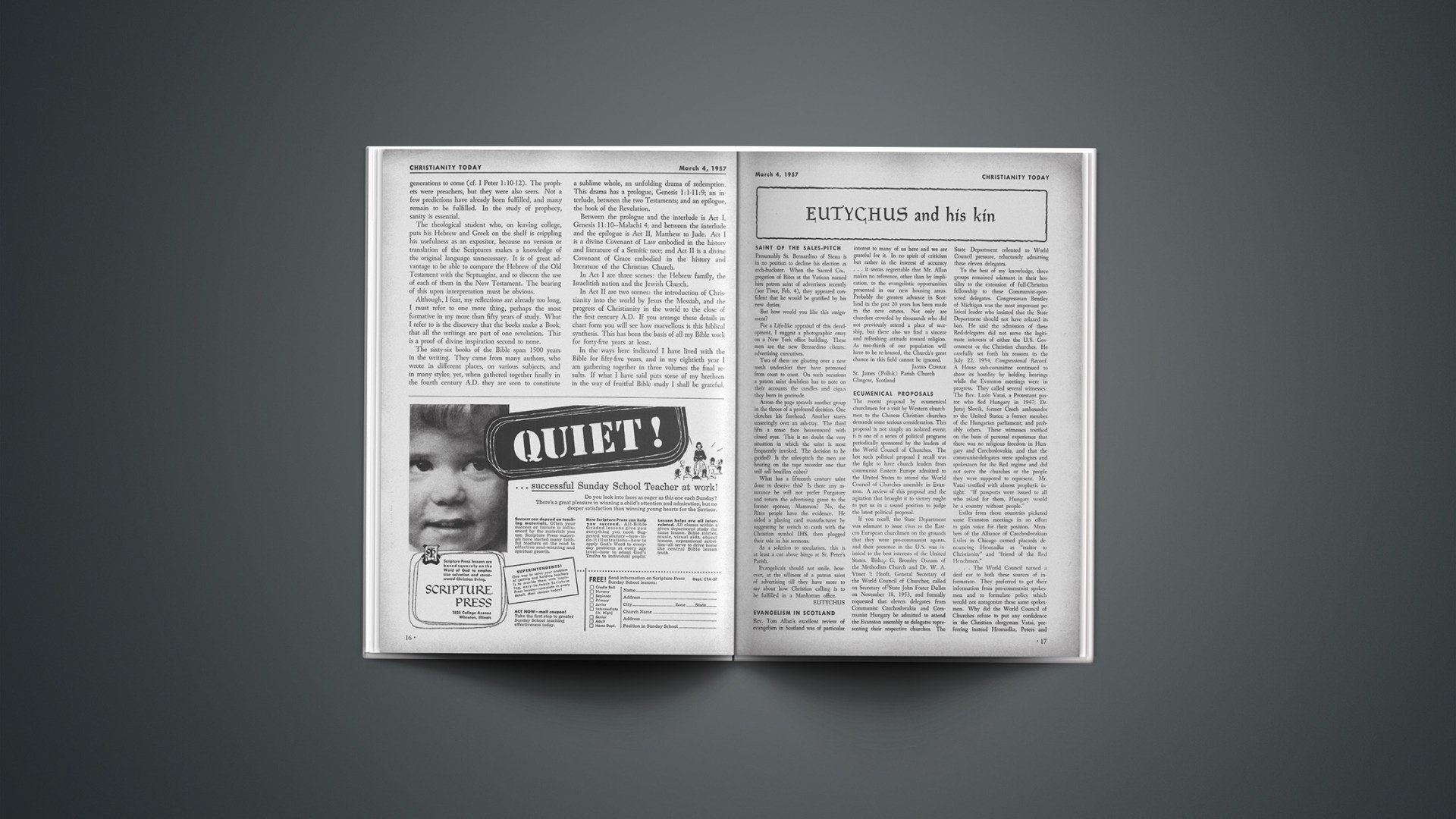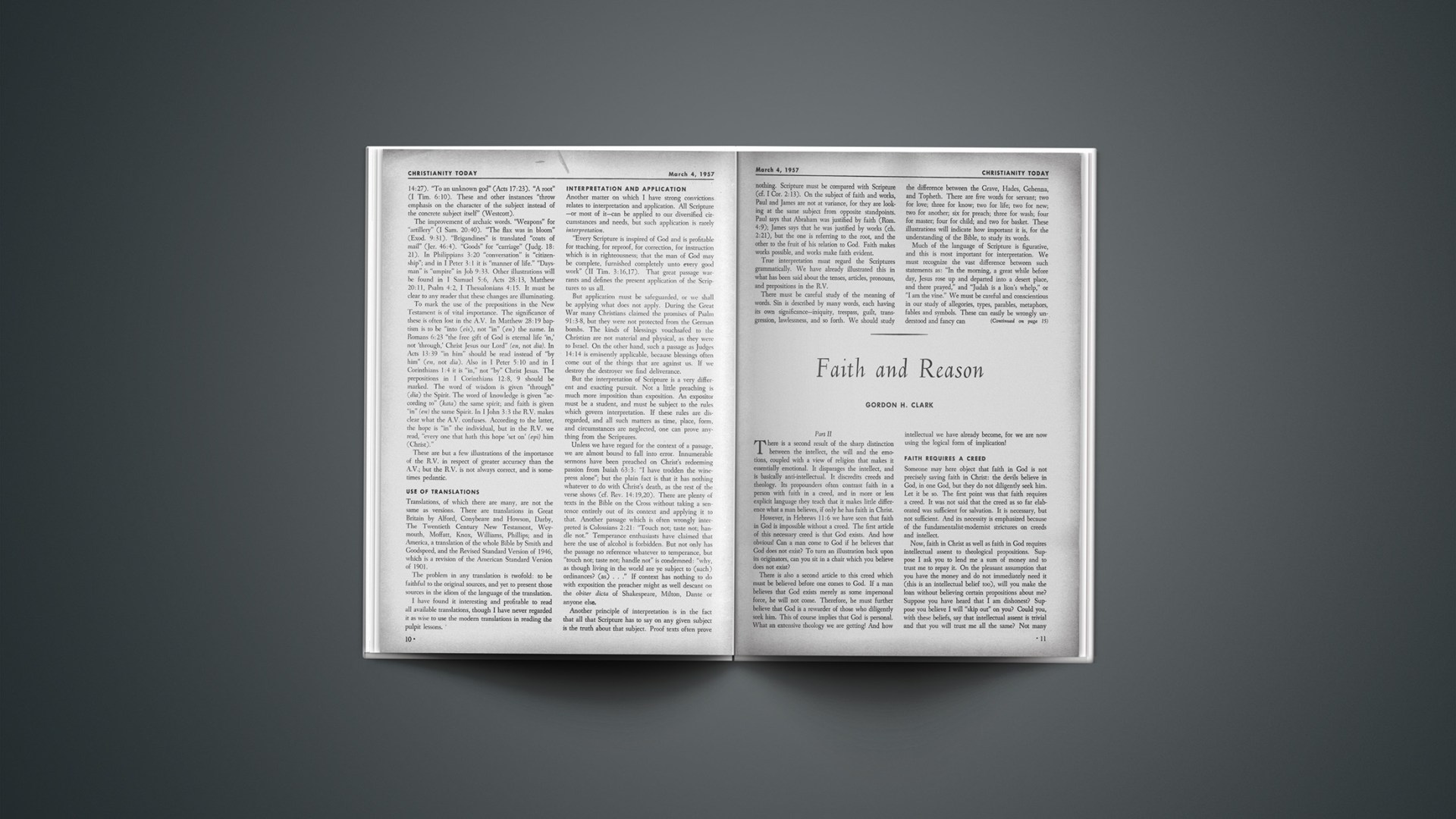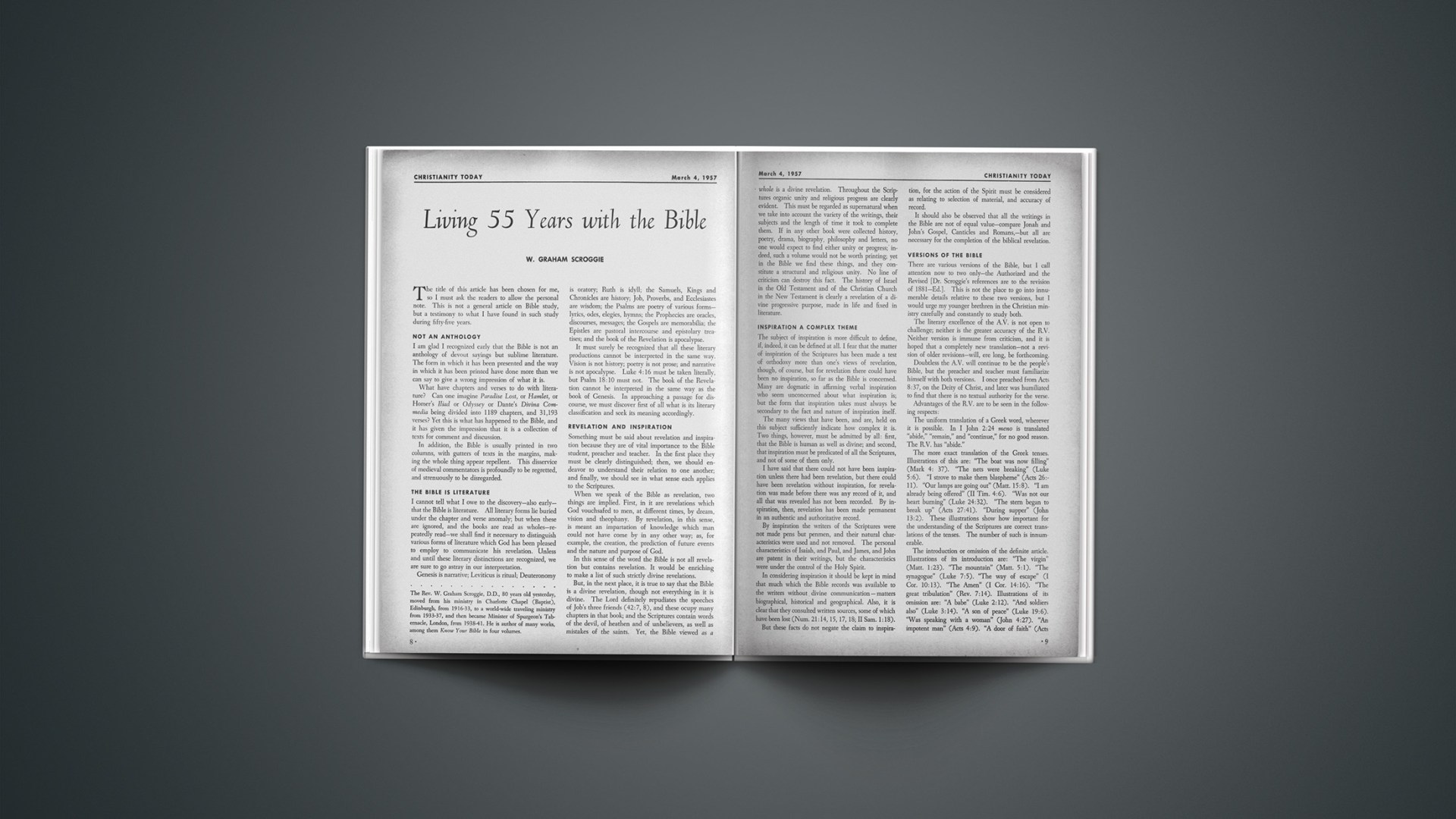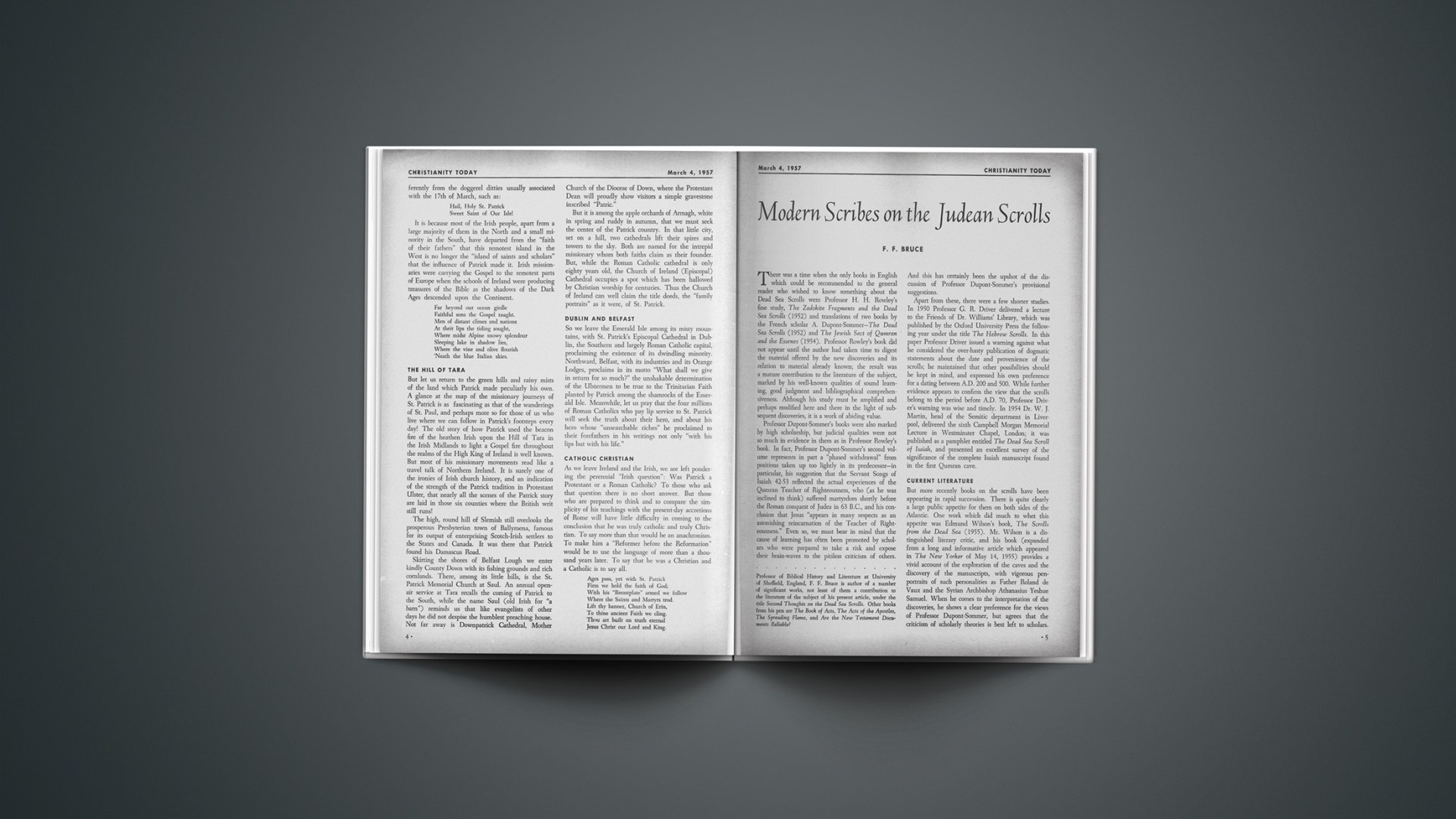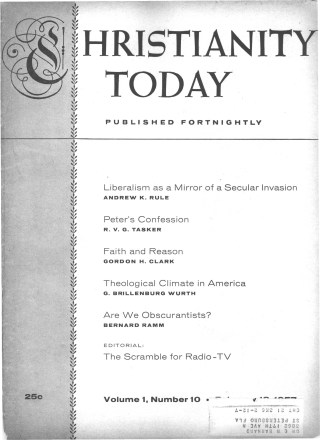SAINT OF THE SALES-PITCH
Presumably St. Bernardino of Siena is in no position to decline his election as arch-huckster. When the Sacred Congregation of Rites at the Vatican named him patron saint of advertisers recently (see Time, Feb. 4), they appeared confident that he would be gratified by his new duties.
But how would you like this assignment?
For a Life-like appraisal of this development, I suggest a photographic essay on a New York office building. These men are the new Bernardino clients: advertising executives.
Two of them are gloating over a new mesh undershirt they have promoted from coast to coast. On such occasions a patron saint doubtless has to note on their accounts the candles and cigars they burn in gratitude.
Across the page sprawls another group in the throes of a profound decision. One clutches his forehead. Another stares unseeingly over an ash-tray. The third lifts a tense face heavenward with closed eyes. This is no doubt the very situation in which the saint is most frequently invoked. The decision to be guided? Is the sales-pitch the men are hearing on the tape recorder one that will sell bouillon cubes?
What has a fifteenth century saint done to deserve this? Is there any assurance he will not prefer Purgatory and return the advertising game to the former sponsor, Mammon? No, the Rites people have the evidence. He aided a playing card manufacturer by suggesting he switch to cards with the Christian symbol IHS, then plugged their sale in his sermons.
As a solution to secularism, this is at least a cut above bingo at St. Peter’s Parish.
Evangelicals should not smile, however, at the silliness of a patron saint of advertising till they have more to say about how Christian calling is to be fulfilled in a Manhattan office.
EUTYCHUS
EVANGELISM IN SCOTLAND
Rev. Tom Allan’s excellent review of evangelism in Scotland was of particular interest to many of us here and we are grateful for it. In no spirit of criticism but rather in the interest of accuracy … it seems regrettable that Mr. Allan makes no reference, other than by implication, to the evangelistic opportunities presented in our new housing areas. Probably the greatest advance in Scotland in the past 20 years has been made in the new estates. Not only are churches crowded by thousands who did not previously attend a place of worship, but there also we find a sincere and refreshing attitude toward religion. As two-thirds of our population will have to be re-housed, the Church’s great chance in this field cannot be ignored.
JAMES CURRIE
St. James (Pollok) Parish Church
Glasgow, Scotland
ECUMENICAL PROPOSALS
The recent proposal by ecumenical churchmen for a visit by Western churchmen to the Chinese Christian churches demands some serious consideration. This proposal is not simply an isolated event; it is one of a series of political programs periodically sponsored by the leaders of the World Council of Churches. The last such political proposal I recall was the fight to have church leaders from communist Eastern Europe admitted to the United States to attend the World Council of Churches assembly in Evanston. A review of this proposal and the agitation that brought it to victory ought to put us in a sound position to judge the latest political proposal.
If you recall, the State Department was adamant to issue visas to the Eastern European churchmen on the grounds that they were pro-communist agents, and their presence in the U.S. was inimical to the best interests of the United States. Bishop G. Bromley Oxnam of the Methodists Church and Dr. W. A. Visser ’t Hooft, General Secretary of the World Council of Churches, called on Secretary of State John Foster Dulles on November 18, 1953, and formally requested that eleven delegates from Communist Czechoslovakia and Communist Hungary be admitted to attend the Evanston assembly as delegates representing their respective churches. The State Department relented to World Council pressure, reluctantly admitting these eleven delegates.
To the best of my knowledge, three groups remained adamant in their hostility to the extension of full-Christian fellowship to these Communist-sponsored delegates. Congressman Bentley of Michigan was the most important political leader who insisted that the State Department should not have relaxed its ban. He said the admission of these Red-delegates did not serve the legitimate interests of either the U.S. Government or the Christian churches. He carefully set forth his reasons in the July 22, 1954, Congressional Record. A House sub-committee continued to show its hostility by holding hearings while the Evanston meetings were in progress. They called several witnesses: The Rev. Lazio Vatai, a Protestant pastor who fled Hungary in 1947; Dr. Juraj Slovik, former Czech ambassador to the United States; a former member of the Hungarian parliament; and probably others. These witnesses testified on the basis of personal experience that there was no religious freedom in Hungary and Czechoslovakia, and that the communist-delegates were apologists and spokesmen for the Red regime and did not serve the churches or the people they were supposed to represent. Mr. Vatai testified with almost prophetic insight: “If passports were issued to all who asked for them, Hungary would be a country without people.”
Exiles from these countries picketed some Evanston meetings in an effort to gain voice for their position. Members of the Alliance of Czechoslovakian Exiles in Chicago carried placards denouncing Hromadka as “traitor to Christianity” and “friend of the Red Henchmen.”
… The World Council turned a deaf ear to both these sources of information. They preferred to get their information from pro-communist spokesmen and to formulate policy which would not antagonize these same spokesmen. Why did the World Council of Churches refuse to put any confidence in the Christian clergyman Vatai, preferring instead Hromadka, Peters and others? What makes Mr. Vatai’s right hand of Christian fellowship any less desirable than another Hungarian? What is the reason for the World Council’s hostility to the information the House Committee for Un-American Activities and the refugee groups supplied? Why does the World Council prefer to make common alliance with communist governments against the U.S. State Department? Mr. Vatai insisted that there was a deep cleavage within Hungary, with the people and their church on one side and the communist government on the other. He said that the communist-appointed church leaders had betrayed the interests of the churches and the people and were in fact shameless collaborators. The World Council leaders studiously ignored this information as they tried to build an all-inclusive World Christian Fellowship that indiscriminately embraced sincere Christians and those who used Christianity to serve communist causes.
There was a third group that was equally unrelenting in its opposition to the World Council program, the fundamentalist International Council of Christian Churches led by Dr. Carl McIntire of Collingswood, N.J. He charged, as he has consistently, that the World Council was betraying the Christian cause when it sought such Christian co-existence and linked its political irresponsibility to its theological indifference.
Thus there were three small groups that stubbornly resisted the World Council policy toward Eastern Europe. They still opposed even after the State Department had relented to the pressure of ecclesiastical politicians and when Red collaborators were in fact, already in the country.…
Then came the amazing revolt in Hungary. In spite of all the past efforts of communist leaders and pro-communist Christian leaders to conceal it, the revolt revealed a great dichotomy between the peasants and workers and their communist rulers. It was evident to even the most stubborn communist apologist that the people were desperate, or they would not attempt a revolution that could not possibly succeed. Only desperation makes men fight tanks with bare hands. The revolt of the Hungarian people proves conclusively that the truth lay with the House committee-refugee Christian-fundamentalist minority, and not with the lying communist spokesmen and the World Council. Bromley,’t Hooft and other World Council leaders are exposed as seriously ill-informed and dangerously naive about real conditions in communist countries. Is their ignorance by chance or by design?
Let us put a spot-light on the Hungarian revolt and see what happened. One of the communist delegates to Evanston, Bishop Janos Peter of the Hungarian Reformed Church had a very difficult time. In the brief period of anarchy before Soviet troops restored communist control the Hungarian Reformed Church summoned an emergency synod. They forced Peter and other proregime clergymen to resign their church positions, charging that they were the worst kind of Stalinists. Peter was forced out of his bishopric and virtually out of the church. His communist friends came to the rescue, and the Kadar government appointed him head of the Cultural Relations Institute. Nomination to the government post is regarded in Budapest as definitely ruling out his return to the episcopal office (see New York Times, Jan. 2, 1957).
This puts us in a very curious situation. Hungarian Christians in a moment of freedom repudiated Bishop Peter as a communist collaborator and a betrayer of the church. Yet he is the same person the World Council accepts in the name of Christian fellowship as a spokesmen and representative for the Hungarian Reformed Church. This puts the refugee Hungarian pastor Vatai and the Hungarian people on the one side and the World Council, Soviet tanks, the Kadar regime and Bishop Janos Peter on the other. How do you think Hungarian peasants feel about this World Council of Churches? What chance does World-Council Christianity stand when Hungary is finally free again?
This painful and unpleasant Hungarian review would not have been necessary if the World Council had learned anything from its sad experiences. But now Dr. MacKay proposes exactly the same type of alliance with regard to China. American Christian leaders are to establish relations with the communist-appointed leaders of the Christian churches in China.
The World Council must first learn whether the same dichotomy between workers-peasants and communist rulers exists in Communist China that existed in Hungary. Have the communist-appointed leaders of the Chinese churches ever betrayed the legitimate interests of their constituents, as did Bishop Janos Peter, to serve the communist government? This problem can be studied. There are Christian refugees in this country to testify as truthfully as did the Hungarian Christian Vatai. Episcopal Bishop Quentin Huang would be worth listening to. There are missionaries who have lived in communist China; they should be consulted. And there are still the same fundamentalist Christians. One of them, Samuel Boyle of Hongkong, cannot be ignored with impunity.
Unless the World Council can exhibit more wisdom and less haste with regard to China than it did with regard to Hungary, it is headed for a similar disaster. If the same kind of reckless, pro-leftist political leadership prevails in the future as it has in the past, Protestant Christianity will eventually die discredited with the communist bed-fellow it chose, when people are finally free.
PAUL B. DENLINGER
Seattle, Wash.
• An Episcopal priest, the Rev. Mr. Denlinger served as a missionary in China from 1946–50, and is now a graduate teaching assistant in the Chinese and Russian Institute of the University of Washington.—ED.
ANOTHER SIDE OF THE DESK
I was disappointed in “The Glass-Top Desk” by Kermit Eby. Just what is Mr. Eby disturbed about? That the churches have gone “plush,” or that the laborers and labor unions have done so?… There is a painful amount of misinformation about the Peabody Seating Company of North Manchester.… The accusations made are, to put it mildly, unkind and unjust. He says that the company is paternalistic: “A relationship between company and the employed involving care and control suggestive of those followed by a father.” This is bad? Or does it suggest a family relationship which involves a companionship and comraderie making for cordiality? He says the employees are in “pitiful” condition. As a matter of fact approximately seven out of every ten of these people own their own homes; most of them drive nice new automobiles and own television sets. We remember, too, that some years ago Mr. Peabody distributed more than a hundred thousand dollars in bonus recognition of the faithfulness and loyalty of his men.…
The strike called against the local company was not the result of a controversy over wages or hours, but was a part of the effort of organizers to force a closed shop upon this community. The idea is absurd on the face of it. Peabody’s is a community enterprise. Men who own farms or have other work which may, at times, release them for part time work in the factory have found a ready welcome in this factory. There has been cordial cooperation with the local college and many of the students put in part-time working to pay their way through school. (In fact, Mr. Eby’s own son was one of these part-time employees.) These should belong to the union?
As for the glass-topped desk, perhaps it was not as expensive as the leather-top which Mr. Eby loved, and certainly such a desk is more sanitary! Perhaps the church he condemns for air-conditioning rather than to employ a fulltime director of education needed the air conditioning to compete with Sunday golf.…
It seems to me the article did a marked disservice to a company manned by employers of unquestioned integrity and completely loyal to their community and to their churches.…
FRED R. CONKLING
North Manchester, Ind.

